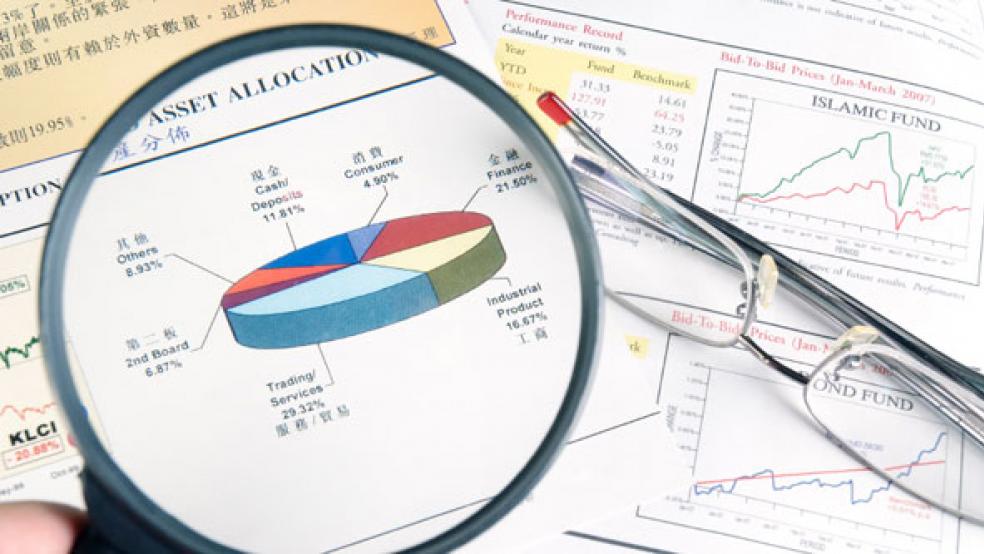U.S. stocks posted healthy gains in 2012, with the S&P 500 generating a 16 percent total return and the Russell 2000 small-cap index delivering 16.3 percent. Unfortunately, investors who entrusted their money to active mutual fund managers were, once again, more likely than not to come up short of those benchmarks. A new Goldman Sachs analysis of $1.3 trillion invested in actively managed mutual funds – funds that have portfolio managers pick and choose stocks rather than follow an index – found that nearly two thirds of the pros underperformed last year.
In spite of that – and despite past data showing that active stock fund managers typically don’t produce returns, after fees and taxes, that are much better than those from index funds – most investors still look to the pros for help. Often, that includes help in choosing from the more 15,000 investment funds out there. In the absence of a crystal ball, it can be tempting to follow the suggestions of the growing array of pundits who have created entire businesses around researching the mutual fund arena. The granddaddy of these, of course, is Morningstar, which late last week announced its 2012 “mutual fund managers of the year.” But even picks from these pros can’t be followed blindly, as some may come with caveats that make them a poor fit for specific portfolios.

The very idea of picking an annual “best of breed” list of top fund managers is as problematic as People magazine’s selection of a different “Sexiest Man Alive” on an annual basis. Presumably, just as no one is bumping off George Clooney and other winners of that accolade, last year’s fund managers – and those presented with the same honor two or three years previously – are still alive and well and plying their trade. Have they suddenly become chopped liver? That’s especially crucial given that investing is not a short-term pastime. It’s one thing to switch our affections from one silver screen idol to another; something else to shift our portfolios from one manager to another on an annual basis, since that has real-life costs associated with it.
Nonetheless, it’s worth taking a look at some of the managers Morningstar has deemed worthy of this accolade – and at a couple of other funds being singled out in one more conservative category.
The Mairs & Power Growth Fund (MPGFX) wins top honors in Morningstar’s domestic stock fund category for 2012, and it’s a good reminder of a fund that looks intriguing and attractive, but has a few big questions circling overhead. While the fund has handily beaten the S&P 500 since the end of 1999, it does so by investing in companies close to its home base in Minnesota. Luckily, there are enough large, financially sound and reasonably valued companies in the region for this to make sense right now (3M, Target, US Bancorp and Medtronic are the fund’s top holdings), but it’s a bit of an artificial constraint. US Bancorp (NYSE: USB), for instance, has fared reasonably well over the last 12 months, but it has lagged more diversified and larger companies, like Wells Fargo (NYSE: WFC), as well as riskier but recovering banks. Target (NYSE: TGT) has done well, but the big gains in retail last year went to apparel retailers, like Gap Stores (NYSE: GPS). And so on. What happens if some of those companies decide to shift their home base to somewhere like South Carolina or Arkansas? This fund has plenty about it to love – including managers’ long-term approach to investing and the deep level of research, a key reason for the local focus – but it comes with risks, such as a disproportionate investment in industrial companies at a time at which these aren’t exactly likely to be great growth engines.
Rajiv Jain, manager of two Virtus funds – Foreign Opportunities (JVIAX) and Emerging Markets Opportunities (HEMZX) – gets Morningstar’s nod for international stock manager of the year. Here there are more obvious reasons for thinking twice before buying in. Jain, as Morningstar acknowledges, keeps 40 percent of his assets parked in his 10 largest holdings, and his holdings are concentrated in India. That worked out well for him in 2012, but will it be the same in 2013? That’s a risk, as the emerging markets are in a state of flux (just look at how swiftly China has fallen from grace, and how rapidly “frontier market” countries like South Africa, Nigeria and Pakistan have emerged as leaders). Moreover, these are funds that charge an up-front load of 5.75 percent and whose expense ratio, at 1.45 percent for Class A shares, has crept from being below average to a notch above average. Those loads and fees eat into the returns that investors will actually collect each year, making it that much harder for the manager to deliver above-average returns.
Investors who find it tough to decide whether growth or value will dominate in 2013; who can’t decide between large cap or small cap, domestic or international, may find asset allocation funds the way to go. These funds take some of the need to make a decision out of our hands by having the fund manager do it for us. These aren’t the funds that you should own if you want to capture solid double-digit gains this year; on the other hand, they’re the portfolios that may help protect you from double-digit losses if the stock market falls off a cliff.
This is the first year that Morningstar has picked a top manager for this category, and the laurels go to David Giroux of T. Rowe Price Capital Appreciation Fund (PRWCX), who keeps less than two-thirds of the fund’s assets in stocks (and less than 10 percent to non-U.S. stocks), while dividing the rest between some kind of fixed income securities and cash. Currently, that includes about 11.2 percent in cash, Morningstar noted, and 10 percent in leveraged bank loans.
Morningstar isn’t the only organization to be scrutinizing these asset allocation funds right now. At S&P Capital IQ, analyst Dylan Cathers has delved into this universe in light of all the uncertainty hovering over the financial markets at present. What’s afoot in Europe? Will Washington policymakers sabotage efforts at resolving the debt impasse yet again? And what about China? If you’re starting the new year off feeling rather “noncommittal,” Cathers has pulled together a list of five “blended” funds that keep at least 40 percent of their assets in stocks.
The total returns from these funds don’t always look particularly impressive – the top performer, the Vanguard Wellesley Income Fund (VWINX), generated a five-year annualized total return of about 7 percent and was up 10 percent last year while the top-performing stock funds generated gains of anywhere from 25 percent to 30 percent. Similarly, the USAA Growth and Tax Strategy fund (USBLX) posted an average total return of 3.6 percent over five years. But they’re more conservative, generate income and peace of mind, and can easily serve as a place for nervous investors to “park” their cash, dipping their toes into the water until they’re comfortable with the idea of jumping in. If you’re looking at this space, however, be sure to keep an eye on the mix of equity and fixed income securities; the credit quality of the latter and the volatility of the former; as well as the returns and fees.
One note of caution about any fund that is singled out as a “top” fund or a manager who wins plaudits or public attention for his or her prowess: That kind of publicity typically generates inflows from investors looking for better returns. And not all managers can cope with big cash inflows or manage significantly larger funds, as history has demonstrated time and again. That is particularly true of managers who invest in smaller or less liquid companies or markets, but to some extent is true of every portfolio manager. The larger a fund becomes, the less nimble it can be, and the more pressure its manager may feel to branch out and include his second-best and third-best ideas in the fund’s portfolio.






